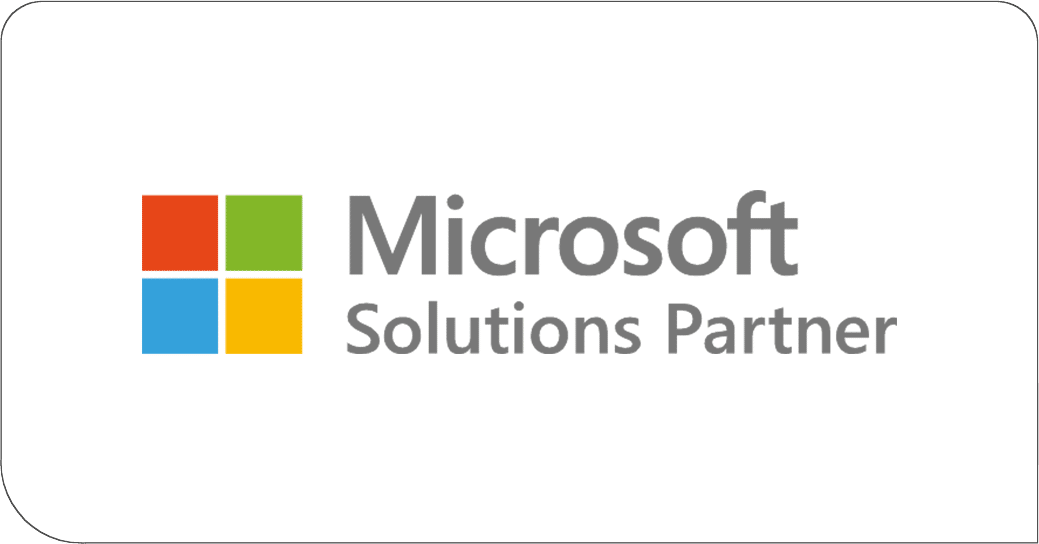Business operations are in full flow now that the holidays are well behind us and the new year is fully underway. But while the year is still young, it’s a good time to take a look at your IT strategy, set IT goals and objectives for the year, and align them with your business strategy.
The technology landscape shifts quickly, and this alignment will ensure that your business can keep pace with technological advancements, using them to drive growth and efficiency.
In this guide, we’ll walk you through a practical checklist to help you sculpt your IT goals for the upcoming year, ensuring your business is agile and ready for what’s next.
Step 1: Assessing IT Infrastructure
Start by mapping out your IT trajectory. This means more than just a quick glance at your current setup – dive deep. Analyze what your business already has, and use that to pinpoint what’s needed to reach your business goals.
- Network infrastructure (Wi-Fi, routers, switches).
- Computing hardware (servers, workstations, laptops).
- Software applications (CRM, ERP, custom applications).
- Comprehensive IT Review: Thoroughly assess current IT infrastructure to pinpoint bottlenecks.
- Future-Ready Planning: Identify technology gaps that could hinder future business growth.
- Performance Optimization: Pinpoint areas for potential performance boosts, such as server upgrades or network improvements.
Step 2: Strengthening Cybersecurity Posture
Cybersecurity is more than just an IT issue; it’s a business imperative. This year, aim to fortify your digital assets beyond basic firewalls and antivirus software. Focus on a holistic security approach that includes advanced, proactive tools and employee awareness to make cybersecurity an integral part of your business culture.
- Security software (antivirus, firewall, encryption tools).
- Network security components (VPN, secure Wi-Fi access).
- Data protection mechanisms (backup systems, data encryption).
- Advanced Security Measures: Pinpoint next-gen cybersecurity solutions that your business may need, e.g. Intrusion Detection Systems, Security Information and Event Management (SIEM).
- Employee Training: Invest in an ongoing cybersecurity awareness and training program for all employees.
- Regular Security Audits: Schedule frequent security assessments to identify and address vulnerabilities.
Step 3: Expanding Cloud Capabilities
This year, focus on leveraging the cloud’s full potential. Moving to the cloud is a strategic move that can bring unparalleled flexibility and scalability to your business. Whether it’s about data storage, application hosting, or utilizing cloud-based software, the goal is to make your operations more efficient, agile, and adaptable.
- Cloud storage solutions (online data repositories, file sharing services).
- Cloud computing platforms (virtual servers, cloud-based processing power).
- Cloud-based applications (SaaS products, web-based tools).
- Cloud Strategy: Develop a clear plan for migrating to the cloud, or expanding your cloud computing capabilities.
- Scalability and Flexibility: Evaluate how your current cloud solutions are working, and how to improve on them for greater business scalability and operational flexibility.
- Data Management: Ensure data storage, backup, and recovery plans in the cloud are up-to-date.
Step 4: New Technology Adoption
Innovation means setting goals to explore and integrate technologies that can enhance your customer services, and transform your business operations. Modern technology incorporates proactive and intelligent solutions like AI and machine learning that can unlock new levels of efficiency and customer engagement.
- Emerging technology solutions (AI algorithms, IoT devices).
- Data analytics tools (business intelligence software, data visualization tools).
- Automation technologies (workflow automation, robotic process automation).
- Emerging Tech Exploration: Research and evaluate emerging technologies relevant to your industry.
- Integration Plan: Strategize how to seamlessly incorporate innovative tech into your current systems.
- Impact Analysis: Assess how new technologies can improve operational efficiency and customer experience.
Step 5: IT Budget Planning
Effective IT management isn’t just about the right technology – it’s also about smart financial planning. Create an IT budget that supports your ambitions without breaking the bank by analyzing past expenditures, predicting future needs, and ensuring funds are allocated judiciously to potentially reduce costs from last year.
- IT spending records (hardware, software, services costs).
- Forecasting tools (for future technology needs and upgrades).
- Investment analysis models (to determine ROI on IT spending).
- Expenditure Review: Analyze previous IT spending to identify cost-saving opportunities.
- Future Needs Forecast: Anticipate upcoming technology needs and budget for them.
- ROI Analysis: Evaluate potential returns on IT investments to prioritize spending.
Step 6: Upskilling Your People
Your IT infrastructure is only as strong as the team that runs it. Ensure you’re investing in your people. Identify skill gaps in your current team and address them through training or hiring. Foster a culture of continuous learning and adaptation to ensure their skills don’t stagnate.
- Current team skill set inventory (technical and soft skills).
- Training resources (online courses, workshops, certifications).
- Recruitment tools (job description templates, hiring platforms).
- Skills Assessment: Evaluate the current capabilities of your IT team.
- Training and Development: Implement training programs to enhance team skills.
- Recruitment Strategy: Plan to hire new talent or outsource certain IT aspects to fill critical skill gaps.
Step 7: IT Policy Planning
To ensure your IT is utilized correctly – from data handling to client privacy – create policies that govern these critical aspects. Your IT policies should be clear, current, and compliant. This includes updating privacy policies, data usage guidelines, and keeping an eye on changing industry regulations. Well-defined policies protect your business and set clear expectations for your team.
- IT security policies (data protection, user access controls).
- Compliance documents (GDPR, CCPA, industry-specific regulations).
- Usage policies (acceptable use, remote work guidelines).
- Policy Review and Update: Revise IT policies to reflect current technology and regulatory landscapes.
- Compliance Checks: Ensure all IT practices align with legal and industry standards.
- Employee Awareness: Regularly communicate policy updates to all staff members.
Step 8: Enhancing User Experience
The customer experience is paramount, and your IT should not just support your business operations: it needs to support your customers’ journey, from initial contact through to service finalization. Invest in IT that makes every customer interaction smooth and satisfactory.
- Customer interface technologies (website, mobile apps).
- Customer relationship management (CRM) systems.
- Feedback and support tools (chatbots, helpdesk software).
- Customer Experience Audit: Assess how your current IT setup impacts customer interactions.
- Technology Integration: Implement IT solutions that improve customer engagement and satisfaction.
- Feedback Mechanisms: Set up systems to gather and respond to customer feedback on their tech experience.
Achieve Business IT Alignment with a Future-Ready Strategy
The right IT strategy will address your immediate business needs while setting the stage for future growth and innovation. Embrace this opportunity to reassess, realign, and revitalize your IT approach, ensuring it fully supports and amplifies your business objectives.
Davenport Group will transform your IT strategy into a powerhouse of efficiency and innovation. Our team of IT strategists have the technology expertise and knowledge to align your IT goals with your business objectives, ensuring your infrastructure supports your team and customers effectively.
Reach out to us for a consultation on optimizing your IT investments for a digital transformation in 2024, and let’s create a strong foundation for your business initiatives.

